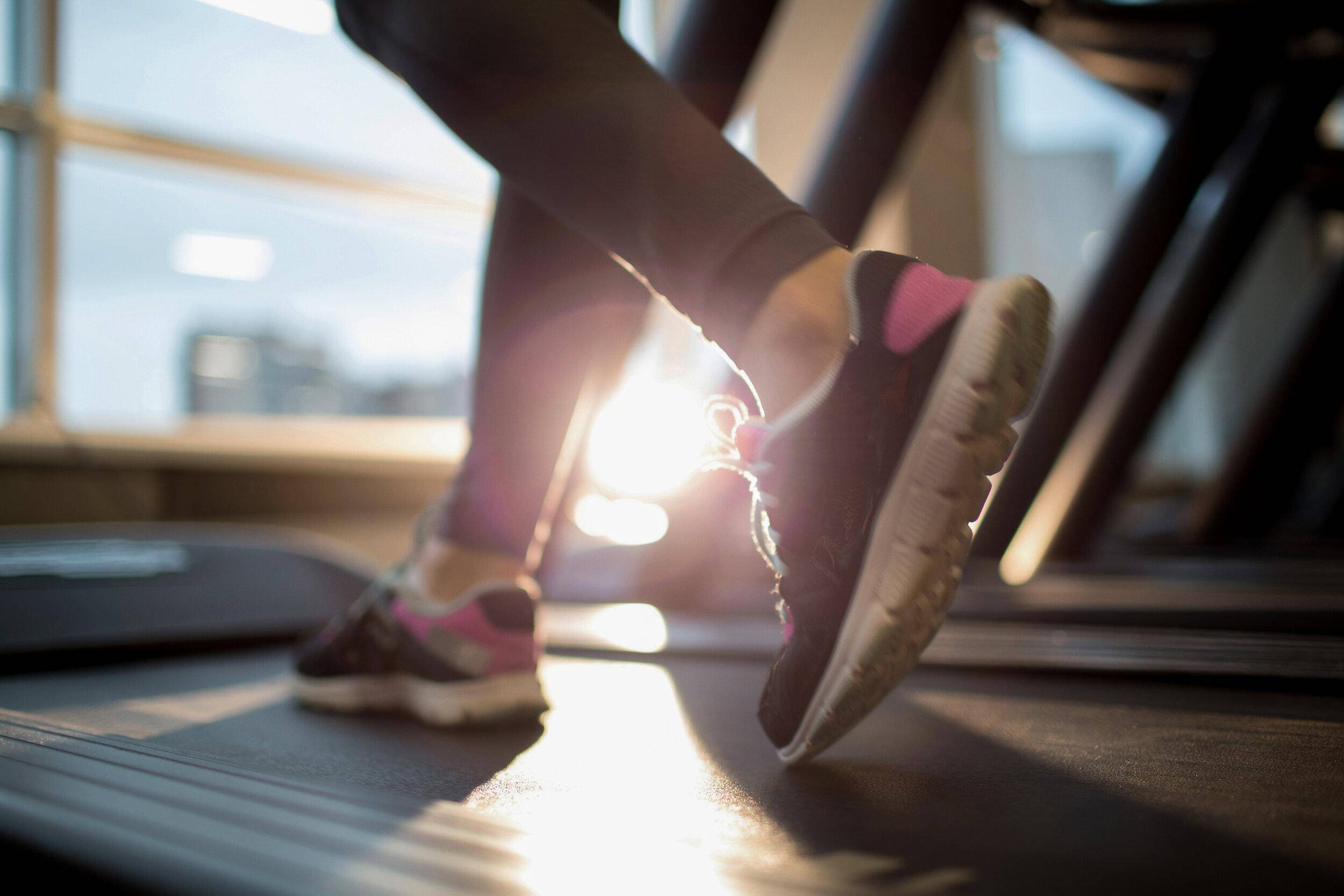If you are new to running, returning after an injury, or starting to train after a period of little to no running then it is important to build up your aerobic base and practice a few techniques to help you stay injury-free and able to complete your goals.
Whether you are returning to racing or just running for exercise and health benefits, your body isn’t ready to go full throttle if you have had a period of rest. In today’s article from Rehab Solutions, three things will be addressed to add to your fitness routine for running.

Modify step count and stride length:
Running on roads, gravel, or on a trail places significant loads on your joints throughout the body. Although it may seem counterintuitive to take more steps, a slightly shorter stride length helps to position the foot under the pelvis to avoid aggressive contact loading with the ground. One technique that we use to cue patients in the clinic is to run at their normal pace on a treadmill, then use a few simple tools to increase the number of steps they take at a constant running pace by only 2-6 steps per minute. Although 2-6 steps is a small change overall, this trick can help improve running performance and limit knee and hip injury. While training, you can think about avoiding reaching out far with each leg to ensure that your leg is under your pelvis when you begin to load the limb with your full body weight.
Hip Strength:
Despite doing exercises to strengthen the hips, there is a poor connection between hip muscle max strength and the endurance that hip muscles need to maintain position throughout the running cycle. To train hip muscles for running, focus on keeping a slight window of space between the knees and middle of thighs when running. The knees should not touch while running, but the space between the knees should also not be excessive. Aim for about 1-3 cm of spacing. This technique will limit excessive tension on the Iliotibial band (ITB) and decrease the tendency for knees to collapse toward each other while running.
Building a Base in Aerobic range with Talk Test or HR monitor:
If you are new to running or beginning again after a break, the various systems of your body will need to adapt to the demands of running. Often, the cardiac system will adapt faster than the musculoskeletal system, therefore initial training needs to build a base of strength for tendon and muscle adaptation. A few weeks of slower, shorter runs will help to facilitate the return to activity. It may be tempting to see how much one can push their training, but building a base of strength for the legs and the heart will help ward off future potential injury. Aim to run at a pace that you can hold a conversation with a friend without having to take a break in the run or pause the conversation to catch your breath. Another method to building a running base is to use an HR monitor and run within your aerobic HR range. Building the aerobic base will also improve oxygen delivery to muscles, allowing the muscles to do more work in the future with the same amount of oxygen consumption.
